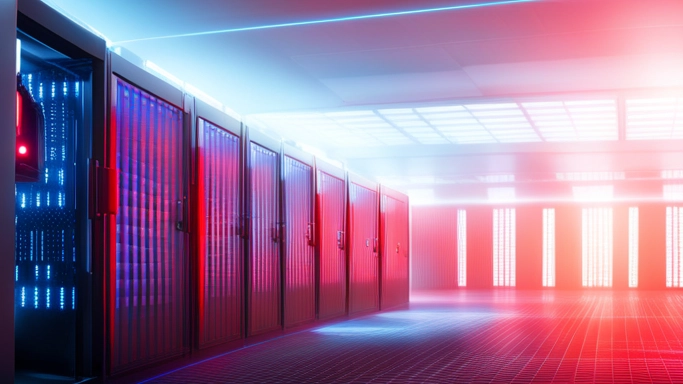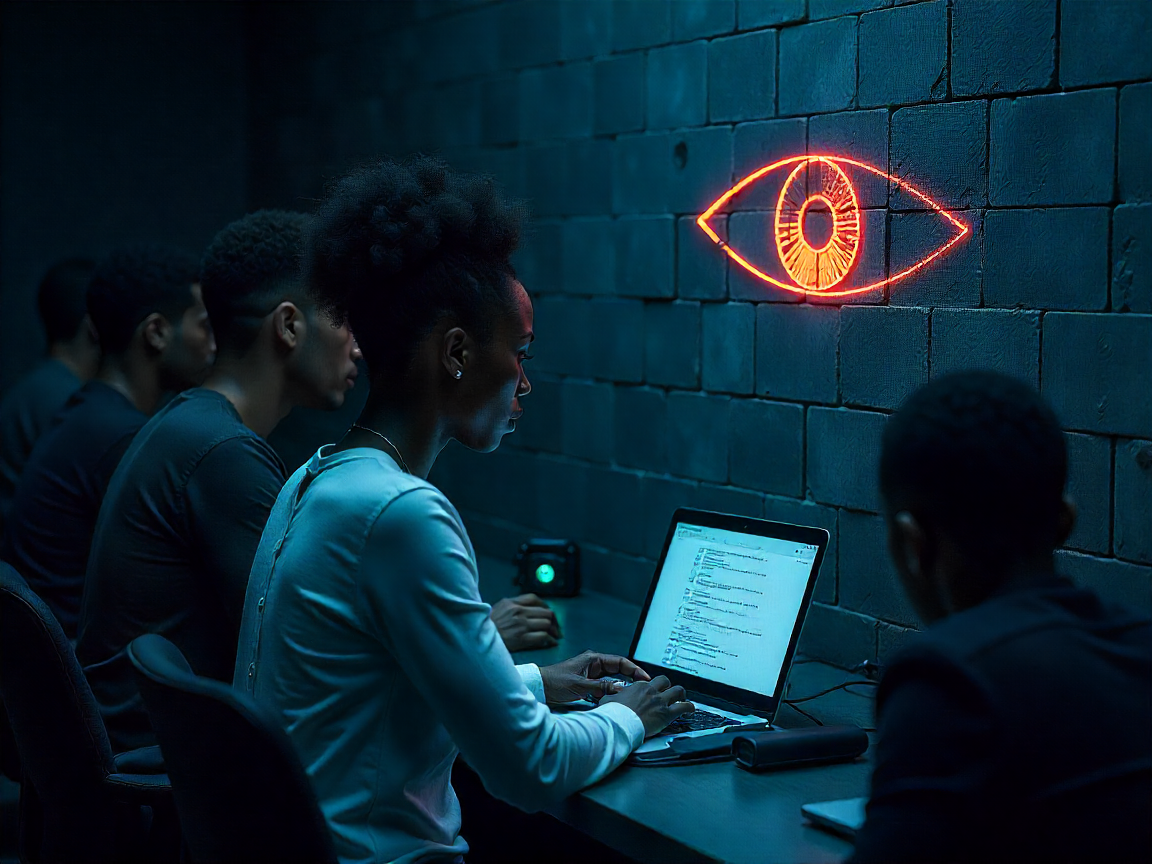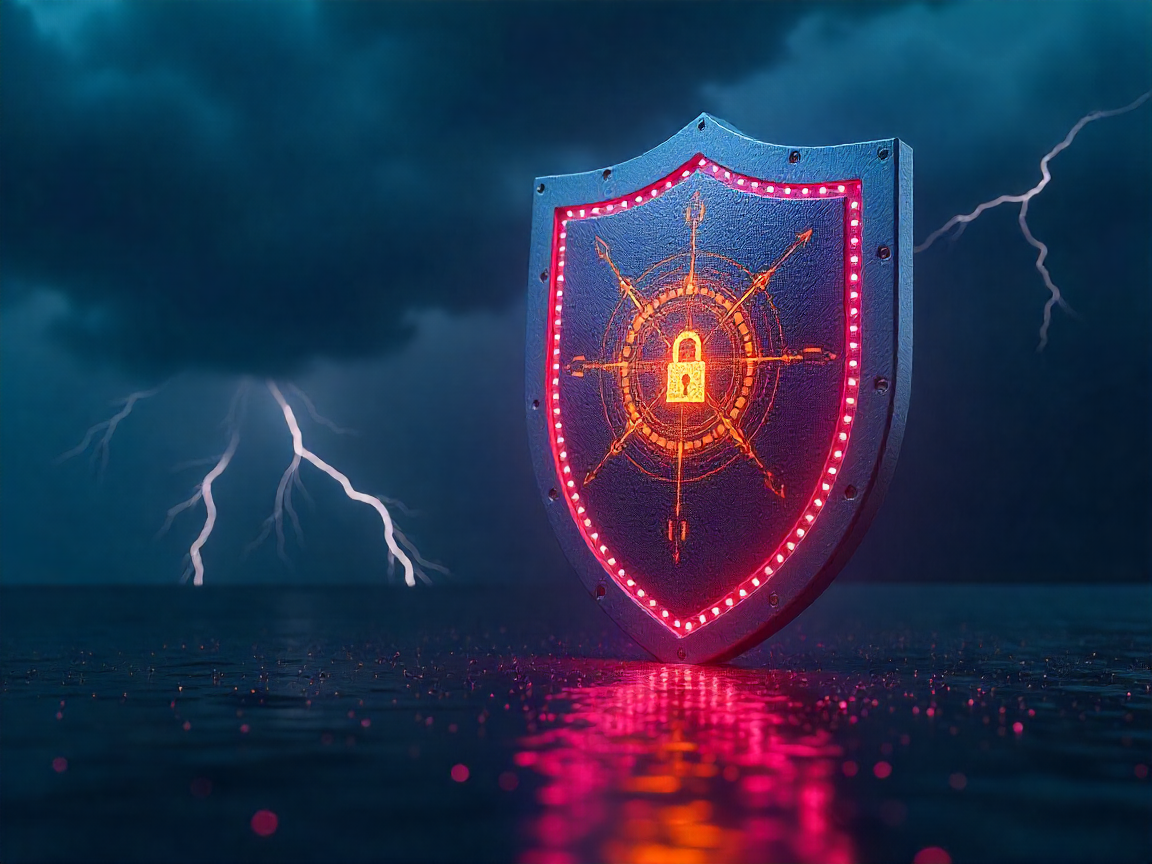Contents
- 1 Why do all organizations need cybersecurity today more than ever?
- 2 Cybersecurity, a fundamental piece in today’s world.
- 3 What role does a Cybersecurity Architect play in your organization?
- 4 How does a cybersecurity architect integrate into your organization to work in collaborative environments?
- 5 The path to continuous improvement.
Why do all organizations need cybersecurity today more than ever?
Cybersecurity has become an imperative today due to the increasing reliance on technology, the sophistication of threats, the amount of sensitive data at stake, regulations, insider threat risk, the importance of reputation, financial costs, and the global nature of threats. All organizations, regardless of size or industry, must take proactive steps to protect their digital assets and ensure their survival in today’s business environment. Let’s take a closer look at each aspect:
- Increased Technology Dependency: In the digital age, virtually all organizations rely heavily on technology. This includes online data storage, electronic communication, process automation and more. This growing reliance makes organizations vulnerable to cyberattacks that can cripple their operations.
- Constantly Evolving Threats: Cybercriminals are constantly evolving and perfecting their methods to circumvent security measures. This means that even if an organization has effective cybersecurity systems in place today, they could become obsolete tomorrow if they are not constantly updated and improved.
- Increase in the Amount of Sensitive Data: Organizations store a large amount of sensitive data, such as financial information, personal customer data, and trade secrets. This data is valuable to cybercriminals, making organizations attractive targets for data theft attacks.
- Regulatory Compliance: Many industries are subject to strict data protection regulations. Failure to comply with these regulations can result in significant financial penalties and reputational damage. Cybersecurity is essential to comply with these regulations.
- Insider Threats: Although cyberattacks are often thought of as external attacks, insider threats are also a major risk. Malicious or careless employees can cause significant security breaches if proper measures are not implemented.
- Reputational Impact: A data breach can have a devastating impact on an organization’s reputation. The trust of customers and business partners can be seriously undermined, which can have long-term effects on the viability of the company.
- Significant Financial Costs: Recovering from a cyberattack can be costly, from investing in security solutions to legal and compliance costs. Lost revenue due to operational disruptions can also be significant.
- Globalization and Connectivity: In a globalized and interconnected world, organizations can be attacked from anywhere in the world. This means that cybersecurity is essential to protect against international threats.
Cybersecurity, a fundamental piece in today’s world.

Cybersecurity is essential to protect the confidentiality of data. In a world where organizations store highly sensitive information, such as financial data, customer personal information, and trade secrets, ensuring that this information does not fall into the wrong hands is imperative.
In addition, data integrity is essential. Cybersecurity is responsible for preventing the unauthorized alteration of information, which is especially relevant in sectors such as healthcare, where the integrity of health records is crucial. It also ensures the availability of an organization’s systems and services, protecting it against attacks that could cripple its operations and cause significant financial losses.
An organization’s reputation is also at stake. A successful attack or data breach can damage customer trust and public perception of the company. Recovering from a bad reputation can be costly and time-consuming. Cybersecurity is also closely related to legal and regulatory compliance, as many organizations are subject to regulations that mandate cybersecurity measures.
In addition to these considerations, cybersecurity helps mitigate financial risks by preventing and managing cyberattacks. Ultimately, it ensures business continuity and enables organizations to innovate securely in an ever-evolving digital environment. For all these reasons, cybersecurity has become a fundamental piece for the survival and continued success of any organization in today’s digital age.
What role does a Cybersecurity Architect play in your organization?

In view of the need to protect organizations, their assets and critical data, a multicloud cybersecurity architect will play a key role in any organization that makes use of cloud services and seeks to ensure the continuity of its services and operations. His role involves designing, implementing, and maintaining effective security strategies in a multi-cloud environment, where the organization uses multiple cloud service providers to host its applications and data. We will mention some key roles and responsibilities:
Asset Management and Control: Asset management is a fundamental responsibility for a security architect. This involves identifying, cataloging, and maintaining an up-to-date inventory of all of the organization’s information technology resources and assets. This task is essential to understand which assets are at risk and how they should be protected. In addition, it helps in the identification of critical assets that require priority security attention. Maintaining an accurate inventory is also important for early detection of unauthorized or unmanaged assets that could be gateways for cyber threats.
Security policies: The development and implementation of security policies is a key pillar in security management. Security architects will work collaboratively with leadership and compliance teams to establish policies governing the use of systems and data. These policies define rules, guidelines, and procedures that must be followed to protect your organization’s assets and information. In addition, they are responsible for communicating and training employees on these policies to ensure compliance. Maintaining up-to-date security policies in response to changing threats and regulations is a critical part of this responsibility.
Secure architectures: Security architects will play an essential role in the conception and design of secure systems and applications. This involves assessing security needs from the early stages of development and ensuring that effective security measures are incorporated. Secure designs focus on mitigating vulnerabilities and minimizing risks from the start, saving time and resources compared to fixing security issues later in the development lifecycle. Security architects collaborate with development teams to apply principles such as the principle of least privilege and threat modeling.
Guaranteed security: Assessing and ensuring the security of systems and applications is an integral part of a security architect’s job. This includes performing penetration testing, vulnerability assessments, and security analysis to identify potential weaknesses in existing or developing systems. In addition, you will be responsible for implementing effective security solutions and monitoring their continuous operation. They can also participate in responding to security incidents and improving processes to ensure continuous and robust security.
Design security strategies: You will develop security strategies that adapt to the organization’s multicloud infrastructure. This includes defining security policies, identifying potential threats, and selecting appropriate security solutions to mitigate risks.
Risk assessment: Perform risk assessments to identify potential vulnerabilities and threats in the multicloud environment and determine the appropriate level of protection needed.
Selection of tools and solutions: Evaluate and select the security tools and solutions that are appropriate for your organization’s multicloud environment. This can include firewalls, intrusion detection systems, encryption solutions, authentication systems, and more.
Implementation of security measures: You will lead the implementation of the defined security measures, including the configuration of security policies, the integration of security solutions into the cloud infrastructure and the training of personnel in security best practices.
Supervision and monitoring: Establish continuous monitoring and supervision systems to detect and respond to security events in real time. This may involve the use of cloud security tools, audit logs, and alert systems.
Security incident management: In case of security incidents, the architect will work on threat response and mitigation, collaborating with incident response teams and following incident management protocols.
Maintenance and updating: As threats and technologies change, the architect must stay current with the latest security trends and update security strategies and solutions as needed.
Cross-departmental collaboration: You’ll collaborate closely with other teams within the organization, such as the IT team, application development team, and compliance team, to ensure alignment of security policies and practices.
Regulatory compliance: You will ensure that the organization complies with applicable security and privacy regulations, such as the General Data Protection Regulation (GDPR) or industry regulations.
How does a cybersecurity architect integrate into your organization to work in collaborative environments?
The job of a cybersecurity architect involves close and effective collaboration with various teams within an organization. This is because security in a multicloud environment is a shared responsibility and requires comprehensive coordination. We mention some of the equipment with which a security architect will work:
- IT team: IT professionals are essential to implementing security solutions designed by the architect. They collaborate in the configuration and maintenance of cloud infrastructure and security tools.
- Application development team: Application developers can introduce security risks if they do not follow best practices. The multicloud cybersecurity architect works with them to integrate security into the application development process.
- Incident Response Team: In the event of a security incident, the multicloud cybersecurity architect collaborates with the incident response team to efficiently identify, contain, and mitigate the threat.
- Compliance and Legal Team: Ensures that the organization complies with security and privacy regulations and regulations. This involves working closely together to ensure that security policies and practices comply with legal and regulatory requirements.
- Project management team: It may be necessary to coordinate multicloud security projects, especially when implementing new security solutions or making major updates. Effective project management is essential to ensure deadlines and objectives are met.
- Internal or external audit team: In some cases, audit teams may review the organization’s security practices. The multicloud cybersecurity architect should collaborate with them by providing information and evidence of compliance.
- Users and employees: Safety awareness and training are essential. The multicloud cybersecurity architect can collaborate on training programs for users and employees, helping them understand security best practices.
Overall, teamwork is critical to ensure that security strategies and solutions are implemented effectively and that the organization is protected against cyber threats. Collaboration between these teams ensures a holistic and well-coordinated approach to cybersecurity in a multicloud environment.
The path to continuous improvement.
In a world that is constantly evolving in terms of cyber threats, technologies and regulations, it is critical to constantly adapt and improve security strategies and measures. This involves regularly reviewing and updating security policies and procedures, as well as implementing new technologies and best practices. Feedback from previous incidents, cyberattack simulation exercises, and trend analysis are common tools to drive this constant improvement, ensuring the organization is prepared to meet emerging security challenges.
Among the activities that allow a Cybersecurity Architect to help organizations on the path to continuous improvement we can mention:
- Vulnerability Management
Identifying vulnerabilities in organizations can be complex and teamwork. Initially, you must know the entire infrastructure of the organization, architecture diagrams, detail of services and assets, interconnections, categorization of data, etc. Vulnerability management is a crucial component of cybersecurity that involves identifying, assessing and remediating weaknesses in systems and applications. Best practices conducted by a Cybersecurity Architect in this area include implementing an ongoing process that begins with vulnerability detection through security scanning and analysis tools. Once identified, vulnerabilities should be classified according to their severity and likelihood of exploitation. This allows efforts to be prioritized in mitigating the most critical vulnerabilities first. Software tools such as Nessus, OpenVAS and Qualys are widely used to scan and manage vulnerabilities.
- Threat Management
Threats refer to any event, activity, or entity that has the potential to cause damage, loss, or disruption to an organization’s information systems, data, assets, or normal operation. These threats can come from a variety of sources, including malicious actors, human error, natural disasters, and other factors. Threat management involves the identification, assessment, and response to cyber threats. The activities that a Security Architect will perform include implementing a framework that addresses threat management proactively. This may include gathering threat intelligence, constantly monitoring systems for unusual activity, assessing the likelihood and impact of threats, and responding to security incidents effectively. Information security software tools, such as SIEM (Security Information and Event Management) and threat detection and response (EDR) solutions, are essential for early detection and response to threats.
- Risk management
Risks refer to potential situations or events that may result in loss, damage, interruption or negative impacts on an organization’s information systems, assets or operations. Risks can result from threats (such as malicious actors, human error, or natural disasters) and from vulnerabilities or weaknesses present in an organization’s systems and processes. Risk management is a fundamental process for identifying, assessing and mitigating cyber risks. Best practices include implementing a structured approach that involves all stakeholders. This involves identifying critical assets, assessing threats and vulnerabilities, determining the likelihood and impact of risks, and prioritizing risk mitigation based on criticality. Methodologies such as FAIR (Factor Analysis of Information Risk) and ISO 27005 provide sound approaches to risk management. Risk management software tools such as Archer, RiskWatch and RiskSense help in risk assessment and mitigation.
- Compliance & Audits
Regulatory compliance is critical to ensuring an organization complies with applicable regulations and security standards. Some of the most important and widely used compliance standards include ISO 27001 (information security management), PCI DSS (Payment Card Industry Data Security), HIPAA (Health Insurance Portability and Accountability Act), and GDPR (General Data Protection Regulation). Security architects must ensure that policies and procedures comply with these standards and prepare the organization for regular audits to verify compliance.
A cybersecurity architect faces the critical task of safeguarding an organization’s infrastructure and digital assets in a world where cyber threats are increasingly sophisticated and persistent. To successfully fulfill this task, the cybersecurity architect will sometimes have the ability to use a variety of tools specific to each need and scope of security within organizations. These tools play an integral role in building a robust cyber defense and the ability to detect, respond to and mitigate threats. Let’s review a few:
Analysis Tools:
- Vulnerability Scanning Tools: Nessus, OpenVAS and Qualys allow to identify weaknesses in systems and applications, providing a clear vision of the areas that require attention.
- Intrusion Detection and Prevention Systems (IDS/IPS): Snort, Suricata and FireEye are tools that monitor network traffic for suspicious behavior or attacks.
- Security Information and Event Management Systems (SIEM): Splunk, ArcSight, and QRadar collect and correlate logs from different sources to detect anomalous activity.
Protection Tools:
- Firewalls and Network Security Appliances: Palo Alto, Cisco ASA, and Fortinet offer protection at the network edge against inbound attacks.
- Antivirus and Antimalware Software: Kaspersky, McAfee and Bitdefender help prevent malware infection.
- Identity and Access Control (IAM): Microsoft Azure Active Directory, Okta, and Ping Identity manage and secure identities and access to resources.
Incident Response Tools:
- Incident Response Orchestration and Automation (SOAR) platforms: Demisto, Phantom and Siemplify allow you to automate incident response and coordinate security actions.
- Forensic Analysis Tools: EnCase, FTK and Volatility assist in the investigation and recovery of data after an incident.
Threat Discovery Tools:
- Anomaly Detection Systems: Darktrace and Vectra AI use behavioral analytics to detect insider threats and advanced attacks.
- Traffic and Packet Analysis Tools: Wireshark and tcpdump allow you to examine network traffic for suspicious activity.
Compliance and Audit Tools:
- Compliance Policy Management: Tenable.sc and SolarWinds SCM help maintain regulatory compliance and specific regulations.
- Security audits: Nessus and OpenVAS can also be used for internal security audits.
Each of these categories of tools plays a unique role in an organization’s cybersecurity strategy. Cybersecurity architects assess the specific needs of the business and select the right tools to build a comprehensive cyber defense. Advanced analytics capability, proactive protection, efficient incident response, early threat discovery, and regulatory compliance are essential components of an effective cybersecurity strategy. These tools become crucial allies in the constant fight against cyber threats in a constantly evolving digital environment.
In summary, we have gained an overview of the daily activities of a security architect. The responsibilities of this professional cover a wide spectrum of tasks crucial to the cybersecurity of an organization. First, the security architect plays a critical role in ensuring that the organization’s systems and infrastructure are built and maintained securely from the start. This involves identifying and mitigating vulnerabilities, properly configuring security policies, and constantly monitoring for potential threats.
However, the work of a security architect is not limited to safe construction, as they also focus on maintaining this security posture over time. This is achieved through the implementation of continuous improvement practices, which involve constantly reviewing policies and procedures, updating security technologies, and adapting to changing cyber threats.
In addition, a security architect does not work in isolation, but collaborates closely with other teams within the organization. Take on additional roles and responsibilities to help other teams achieve the collective goal of a secure organization. This may include asset management, security awareness, risk management, vulnerability management, regulatory compliance, and participation in security audits.
Ultimately, the role of a security architect is essential in protecting the organization against growing cyber threats in an ever-evolving digital environment. Their dedication to security, building a solid infrastructure, and collaborating with other teams are critical pillars to achieving a secure organization that is resilient to cyber threats.
Thank you for reading friend.









Leave a Reply